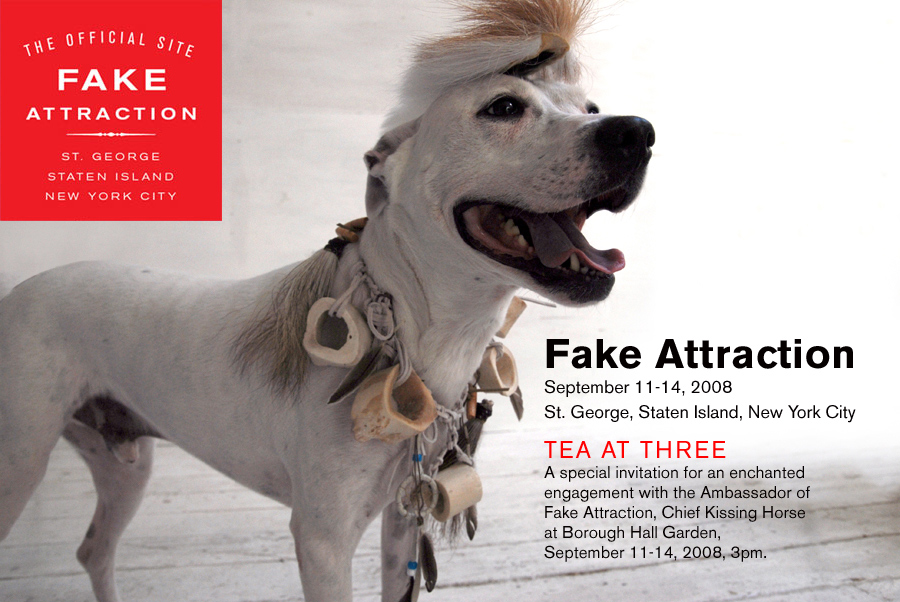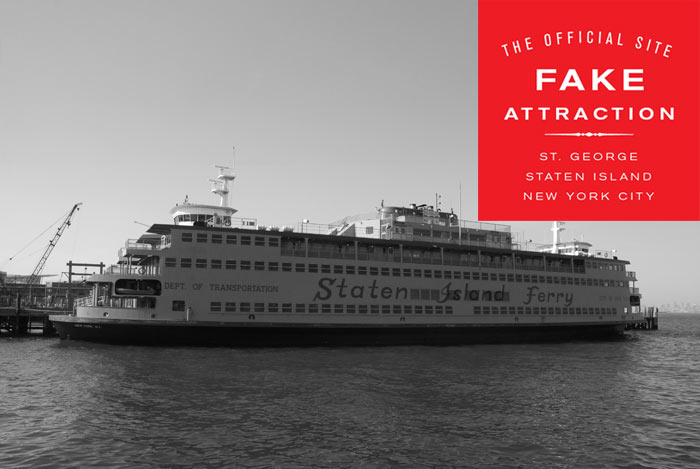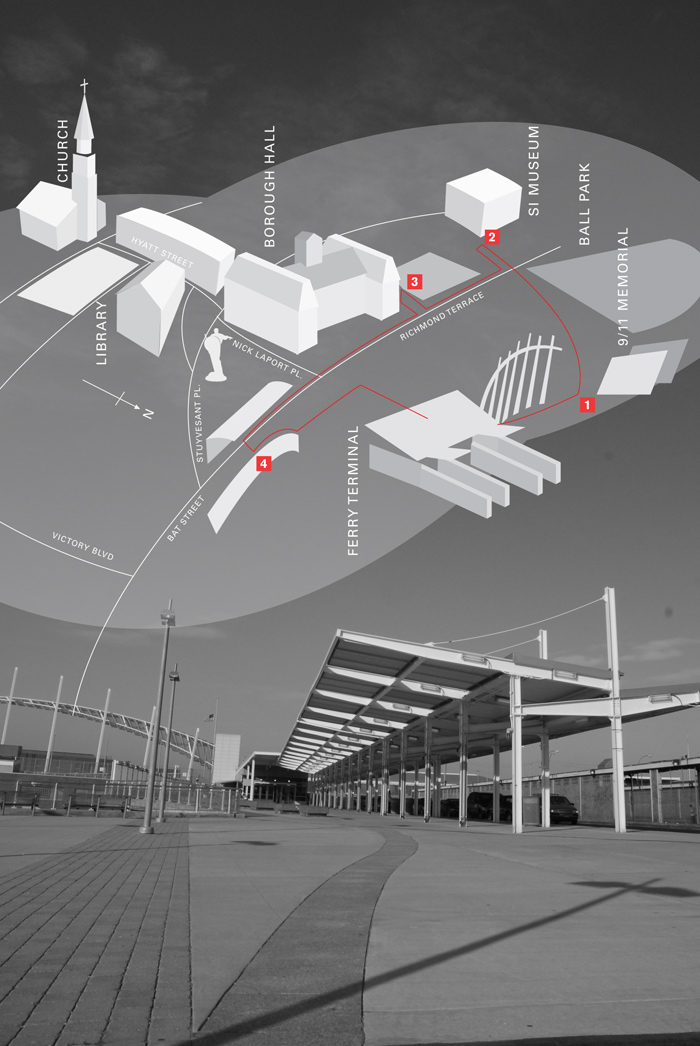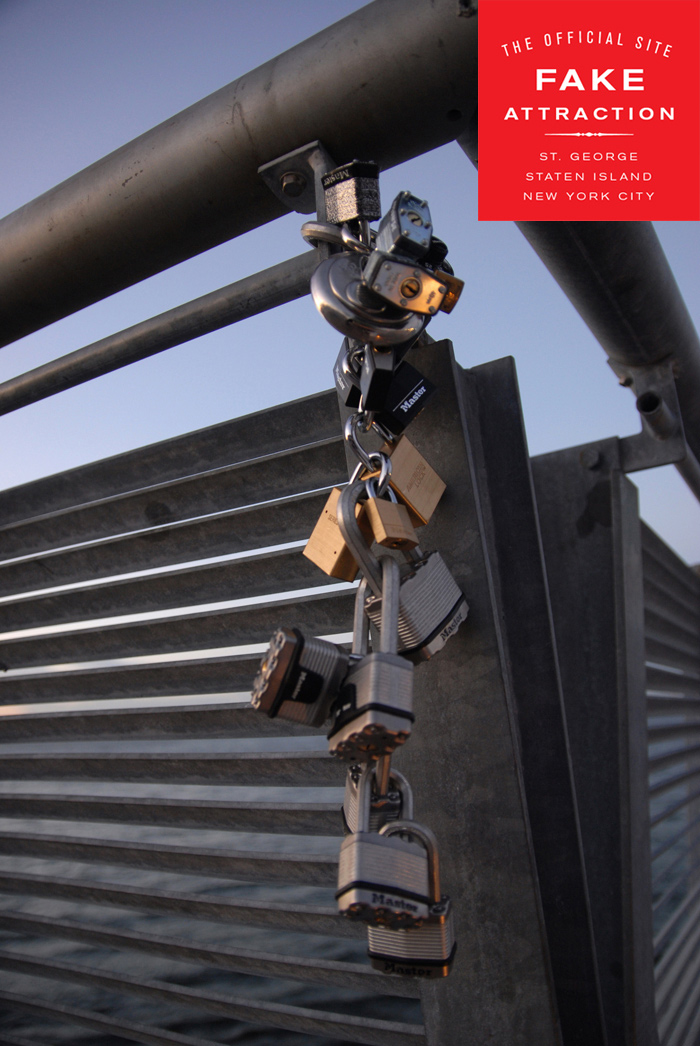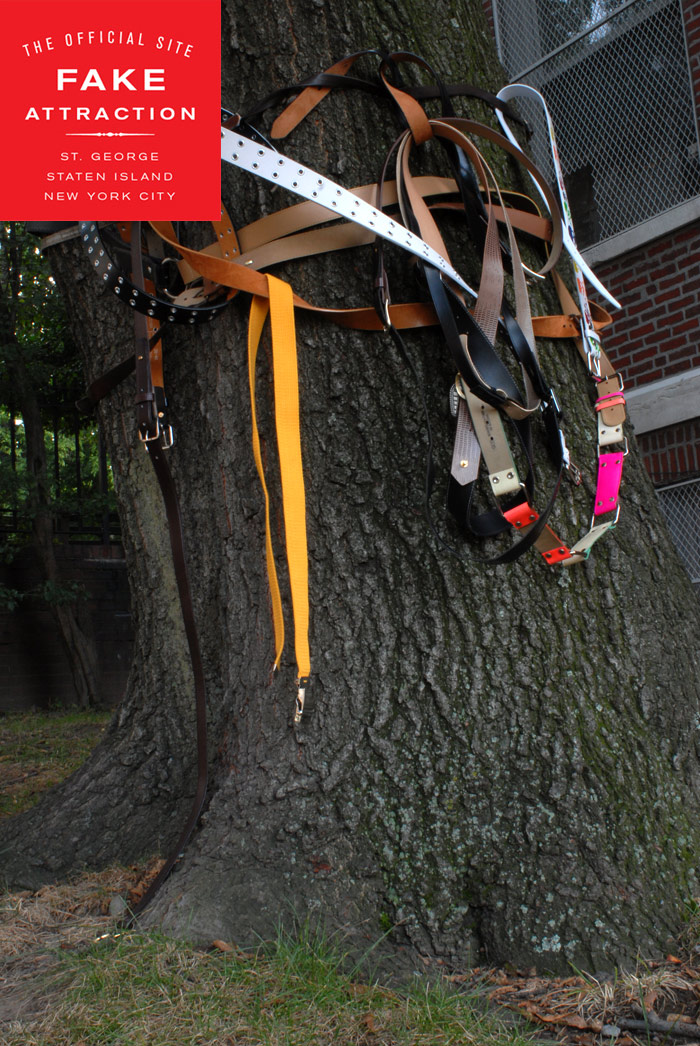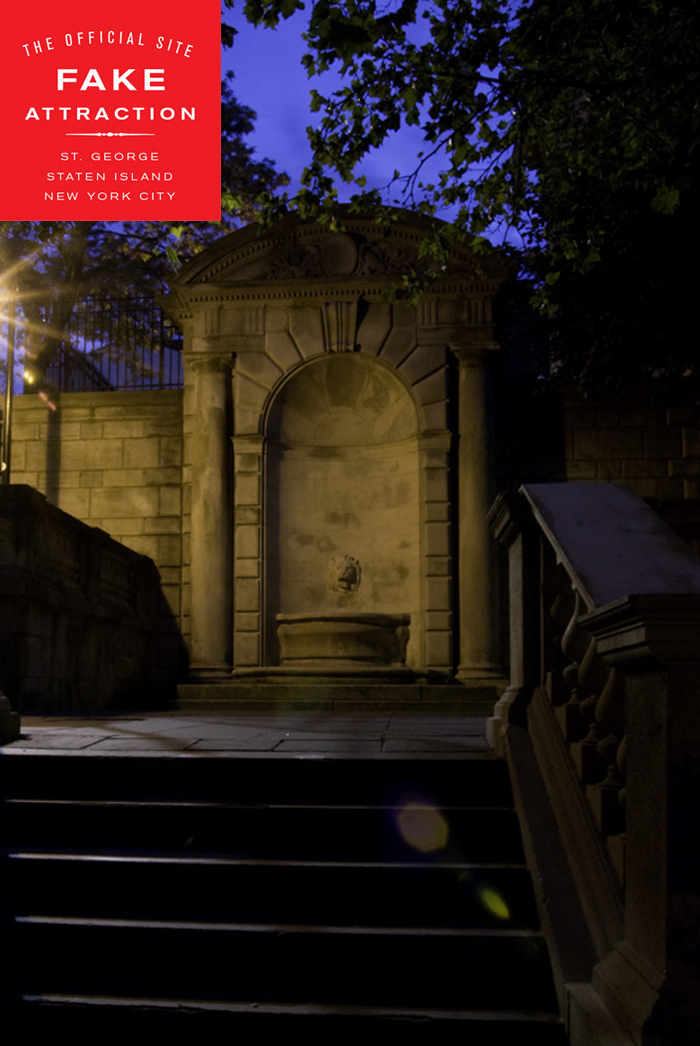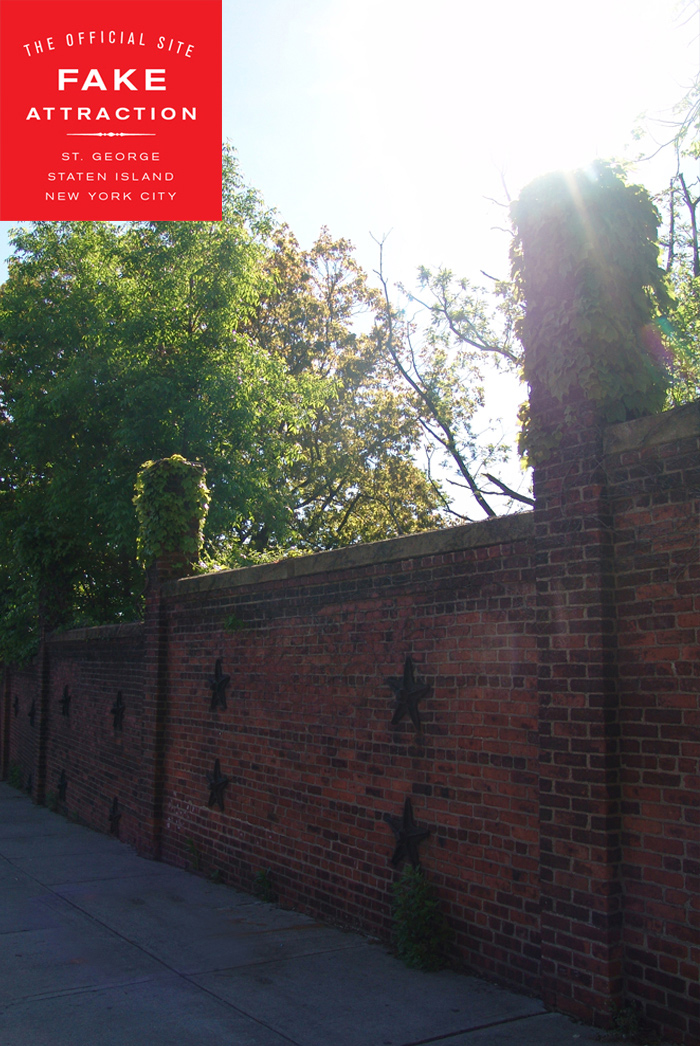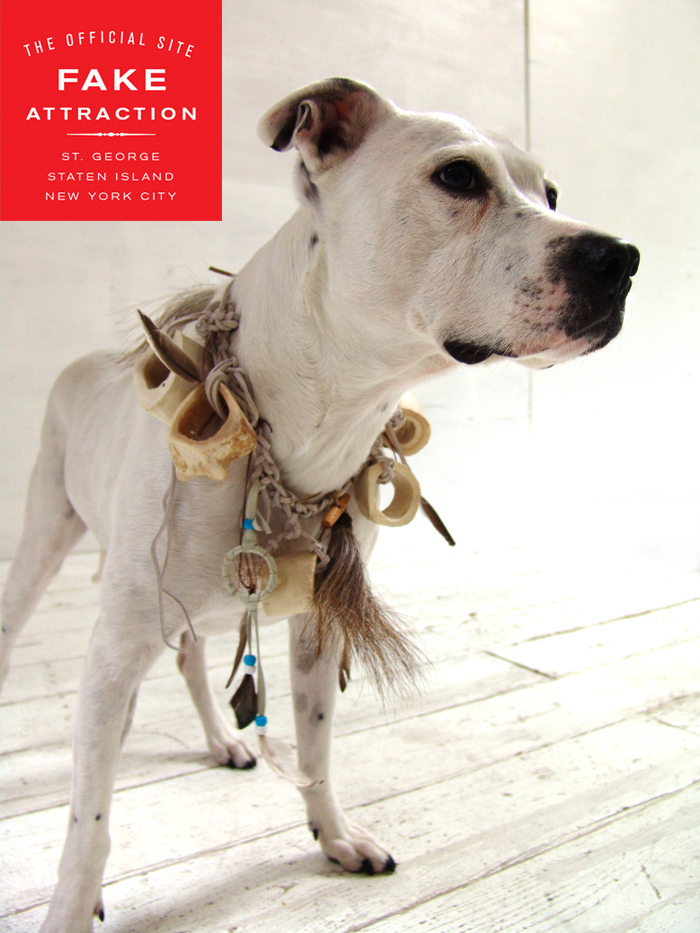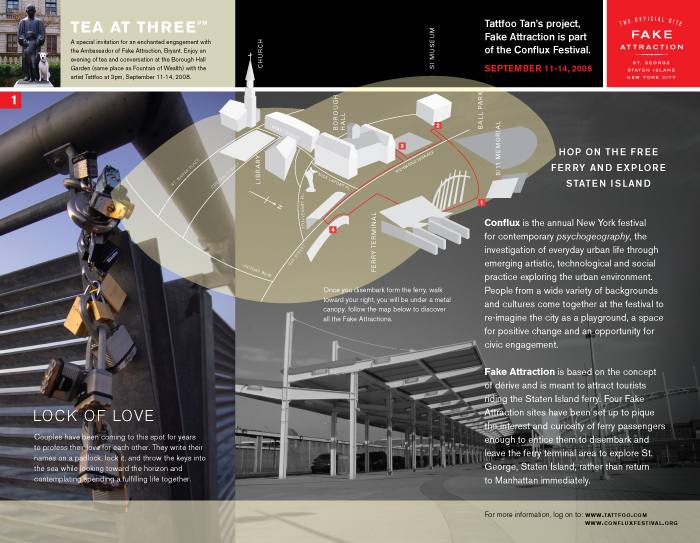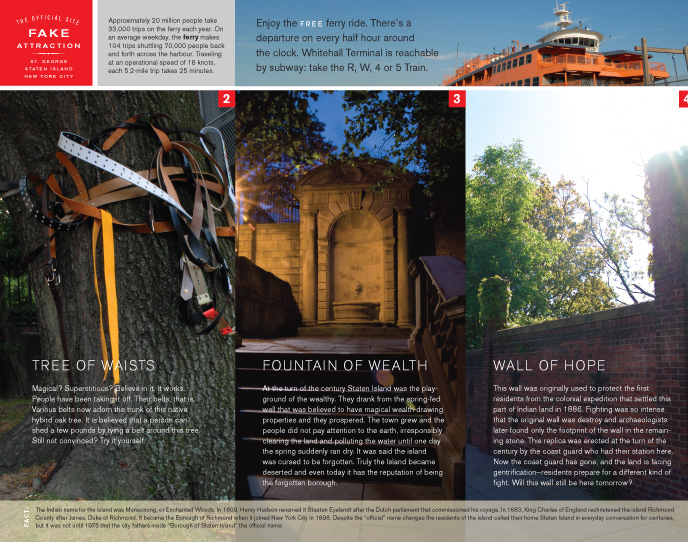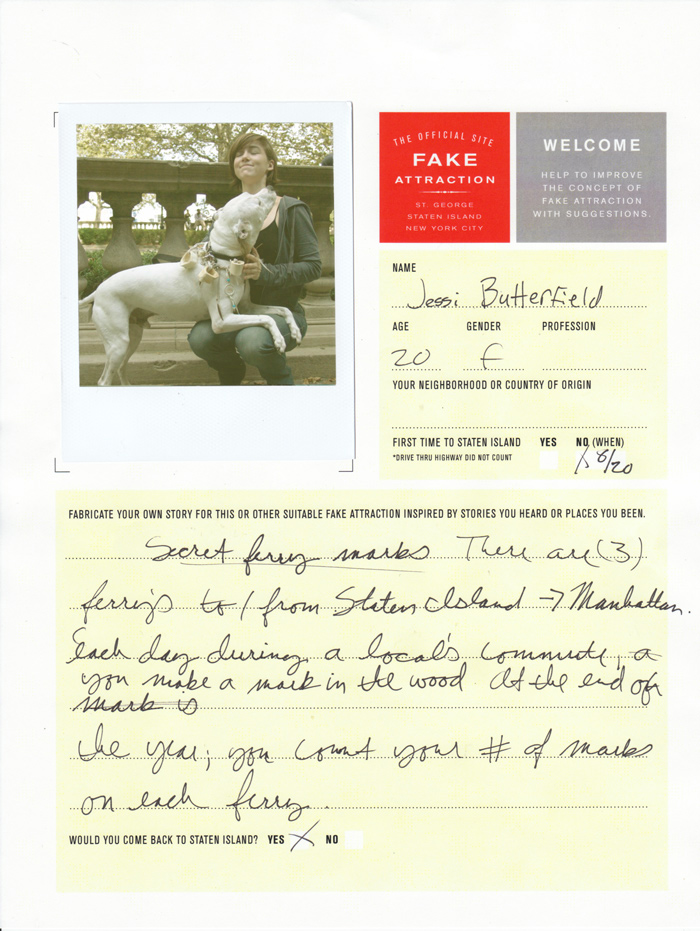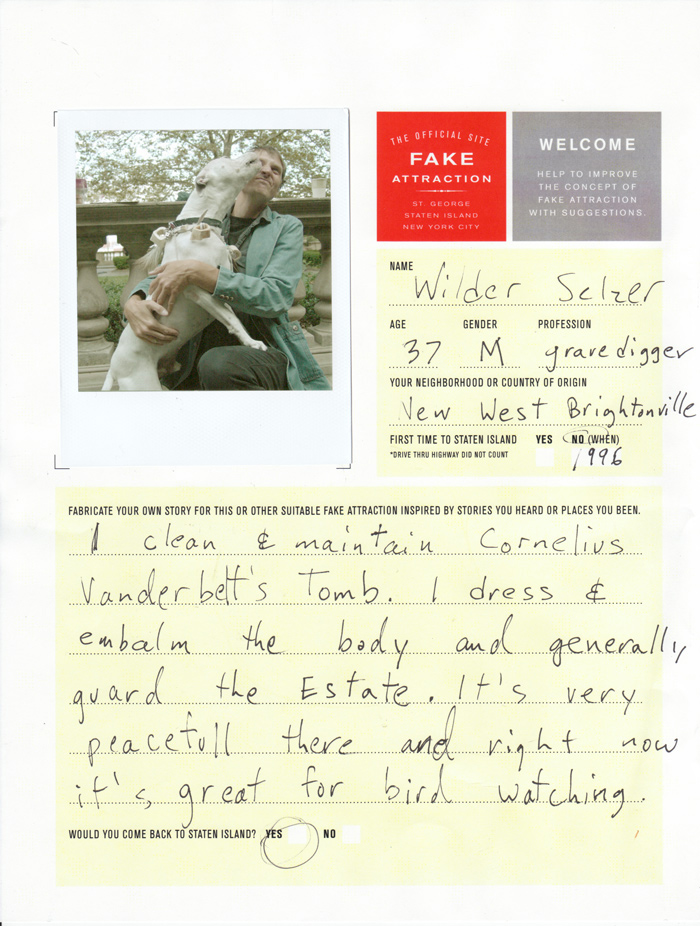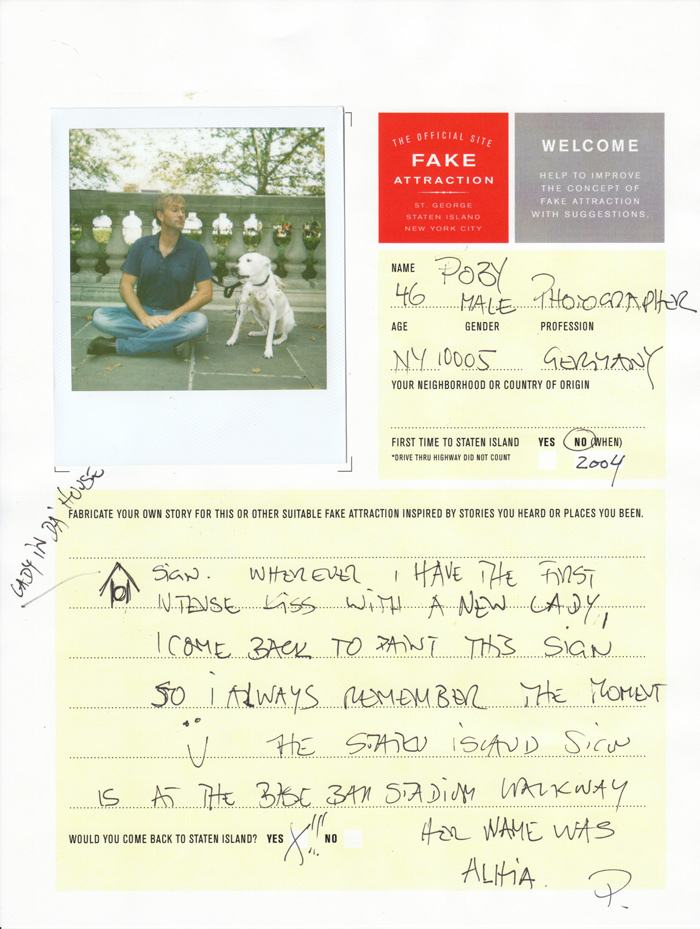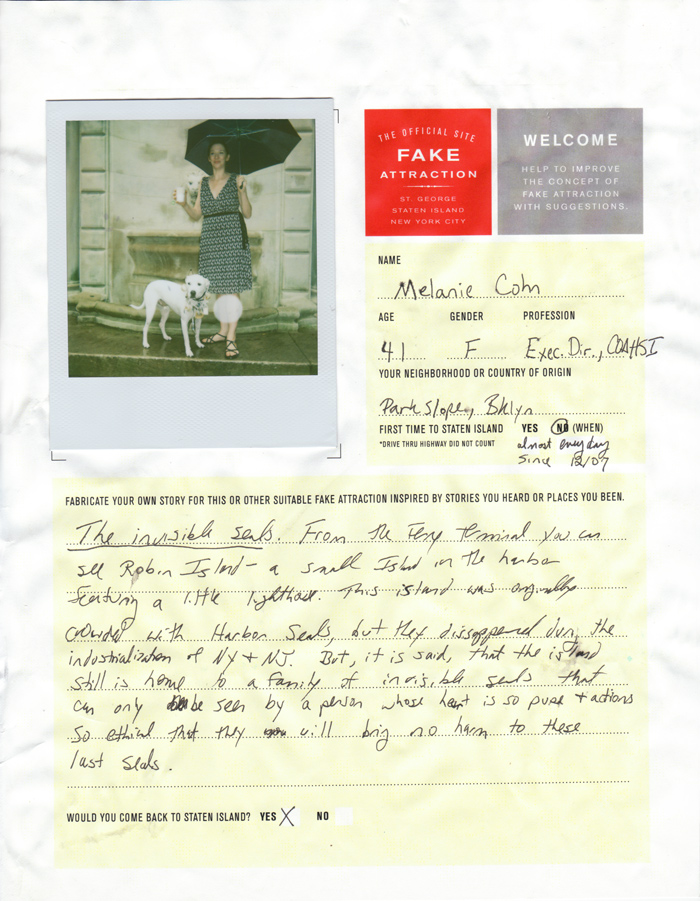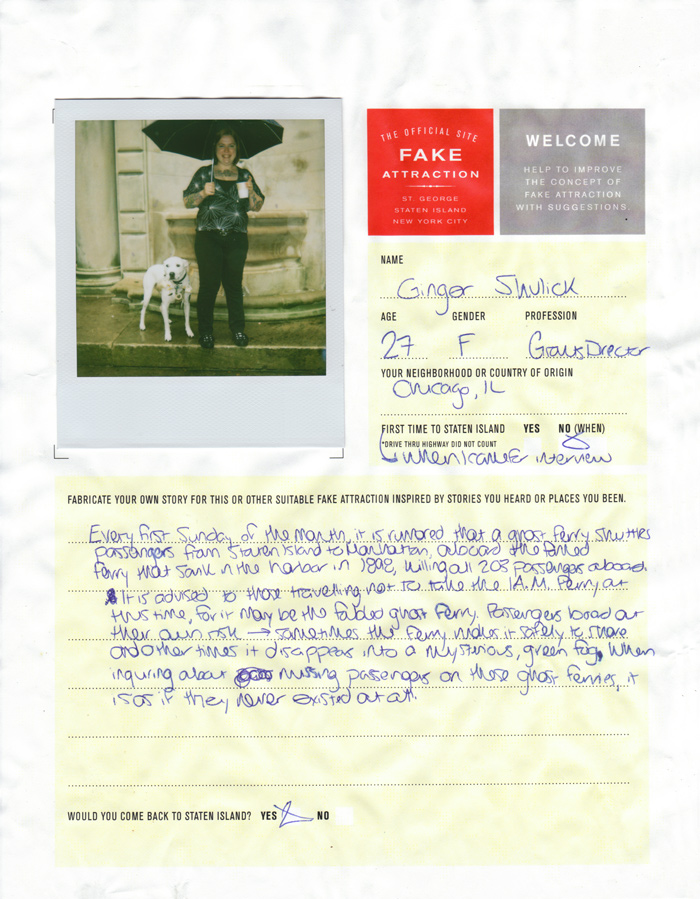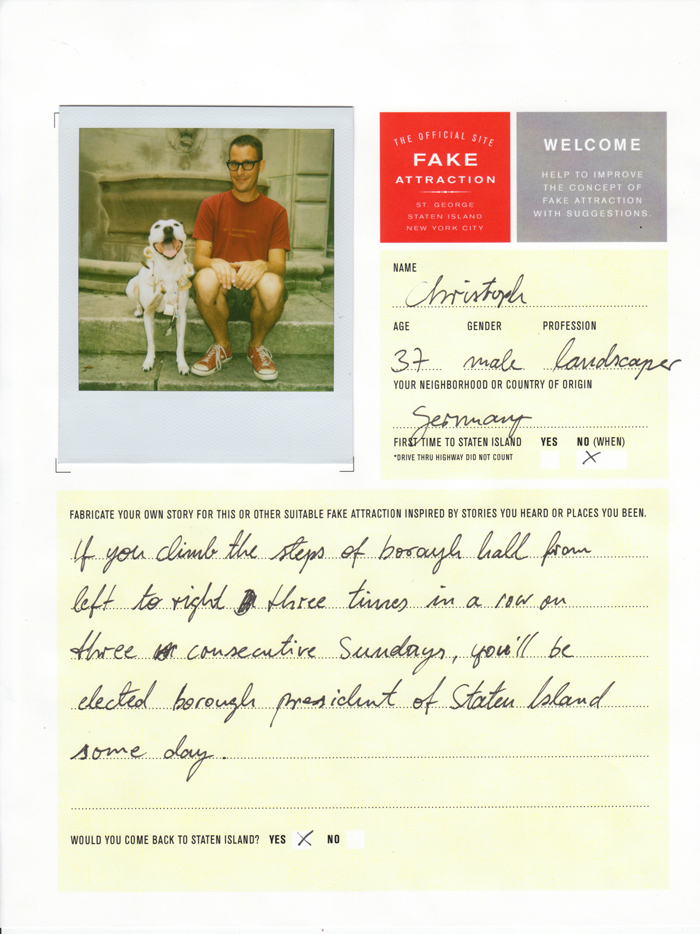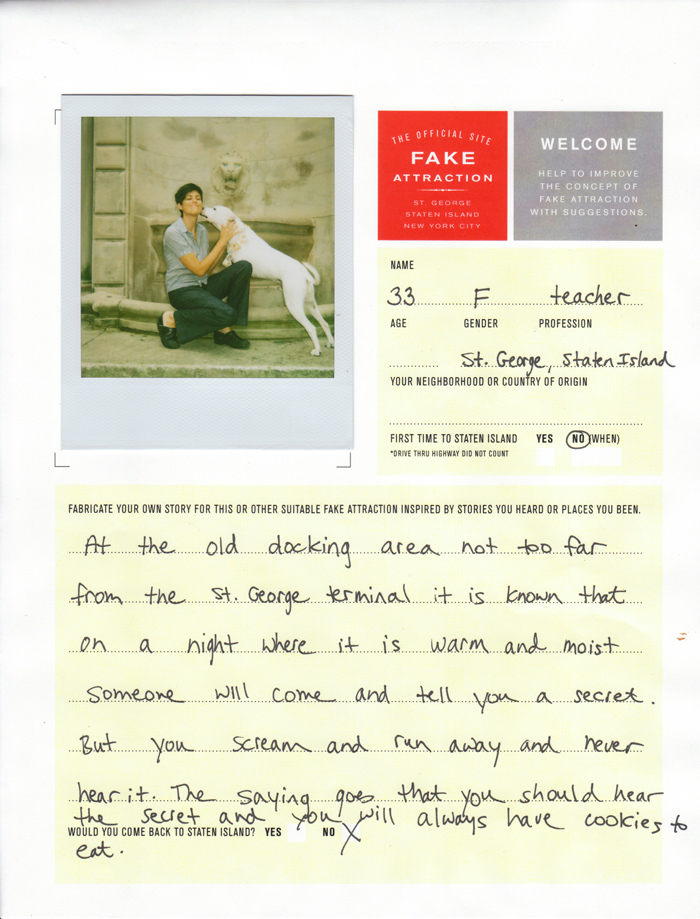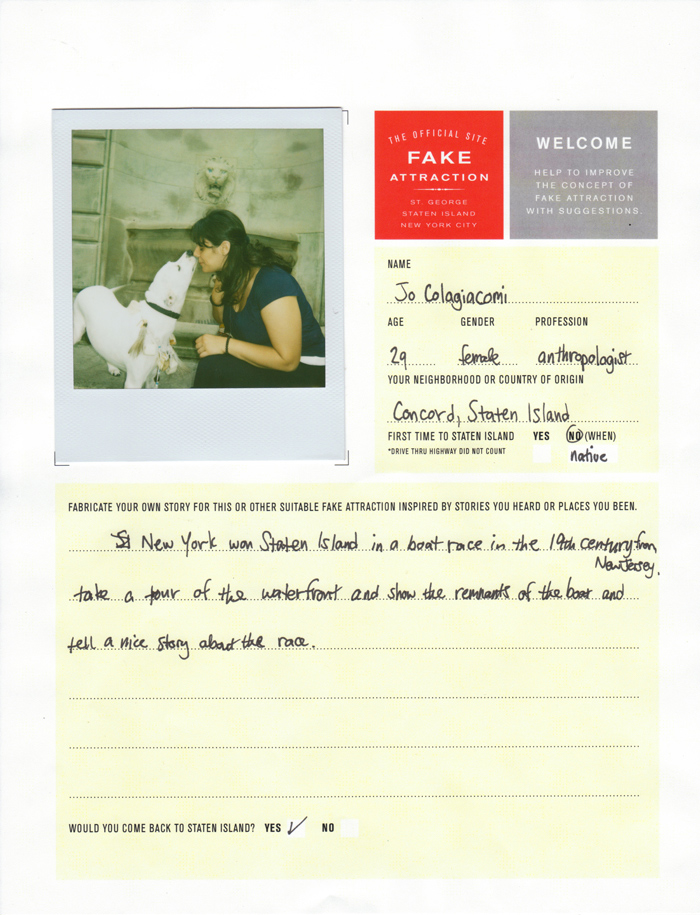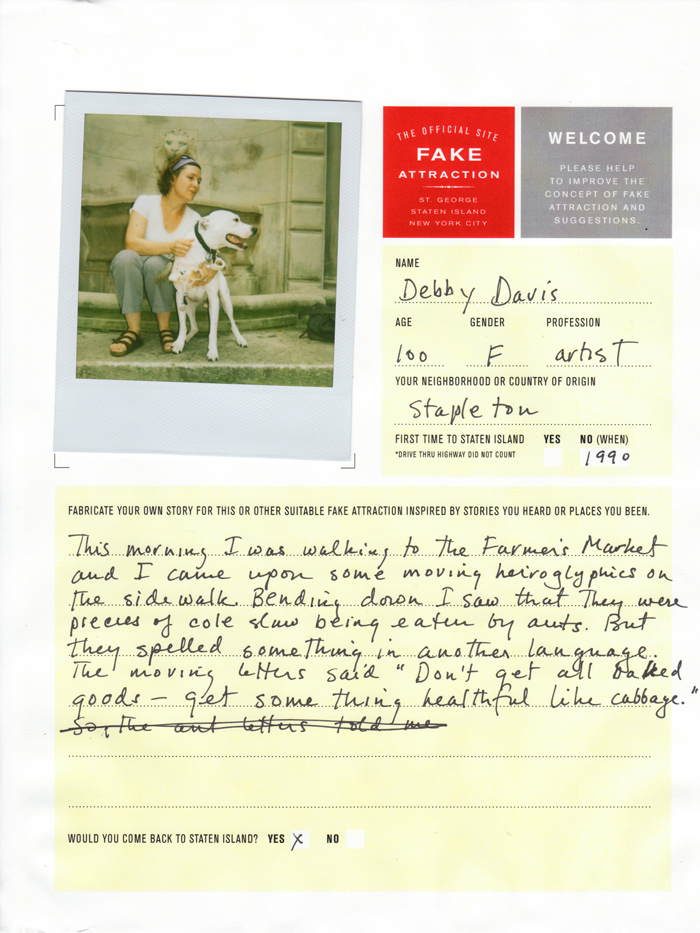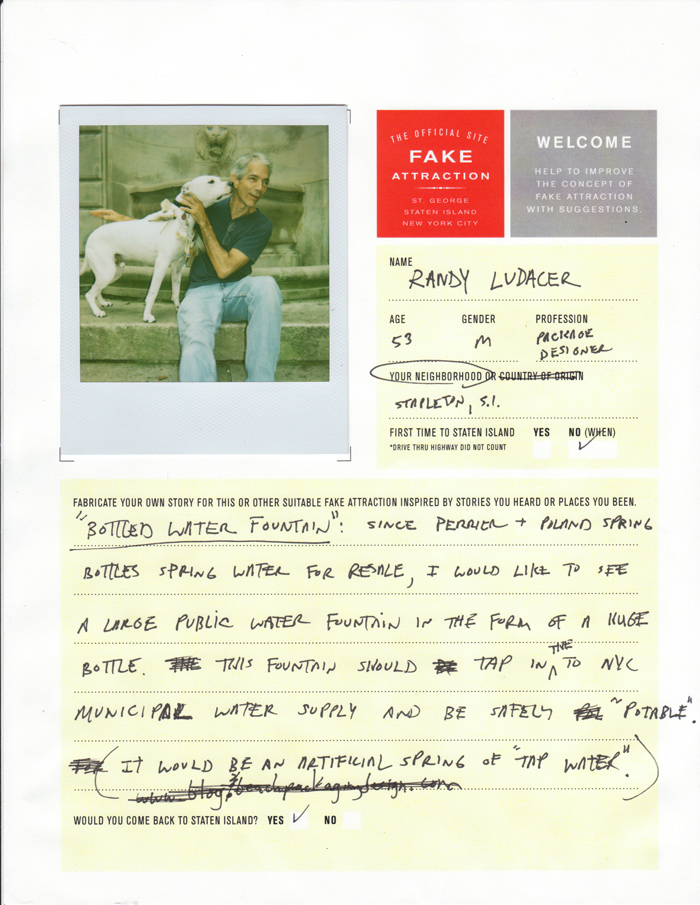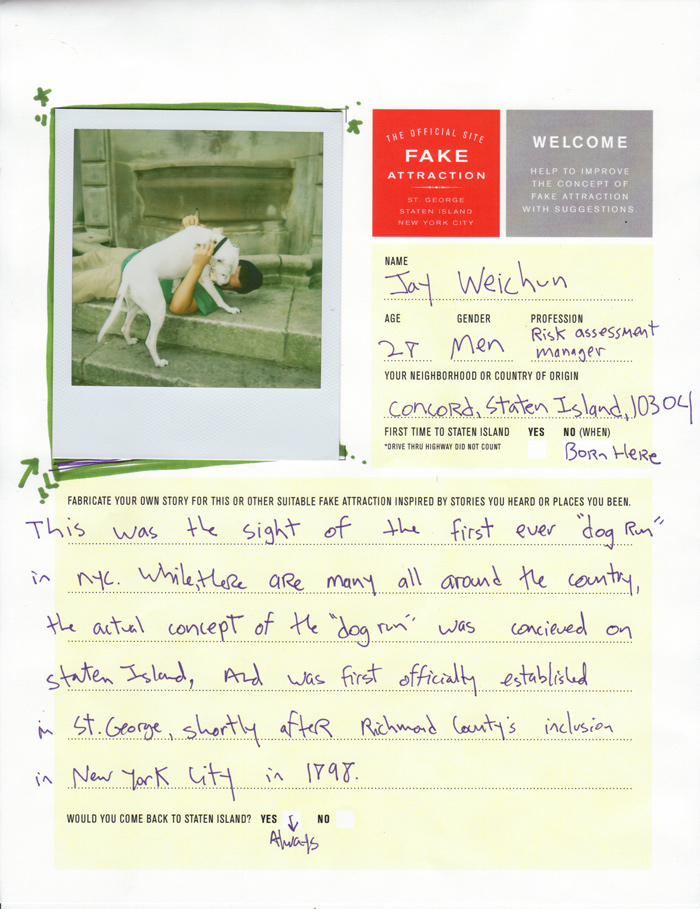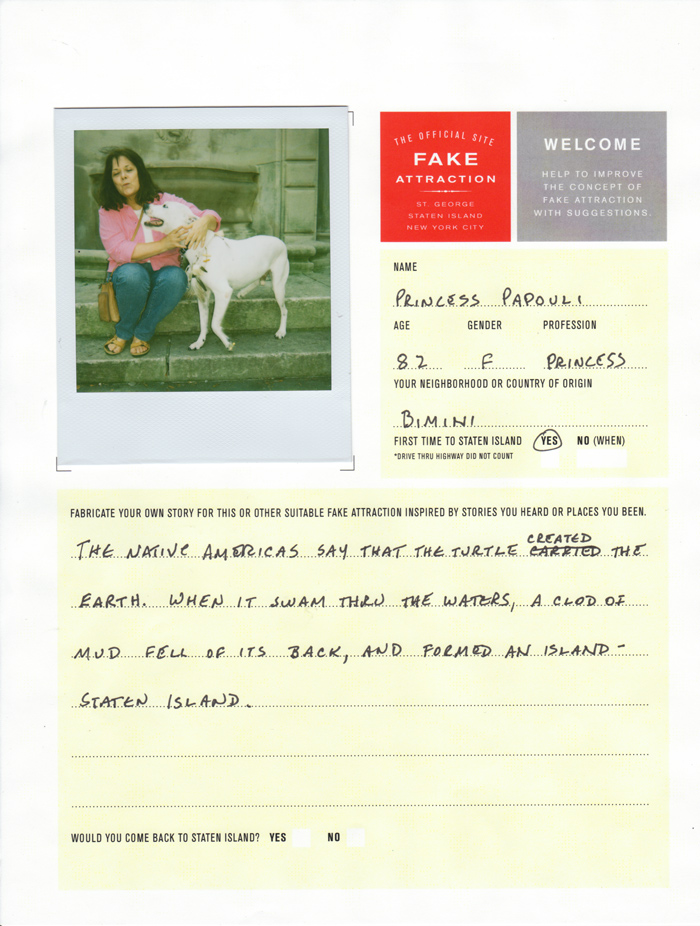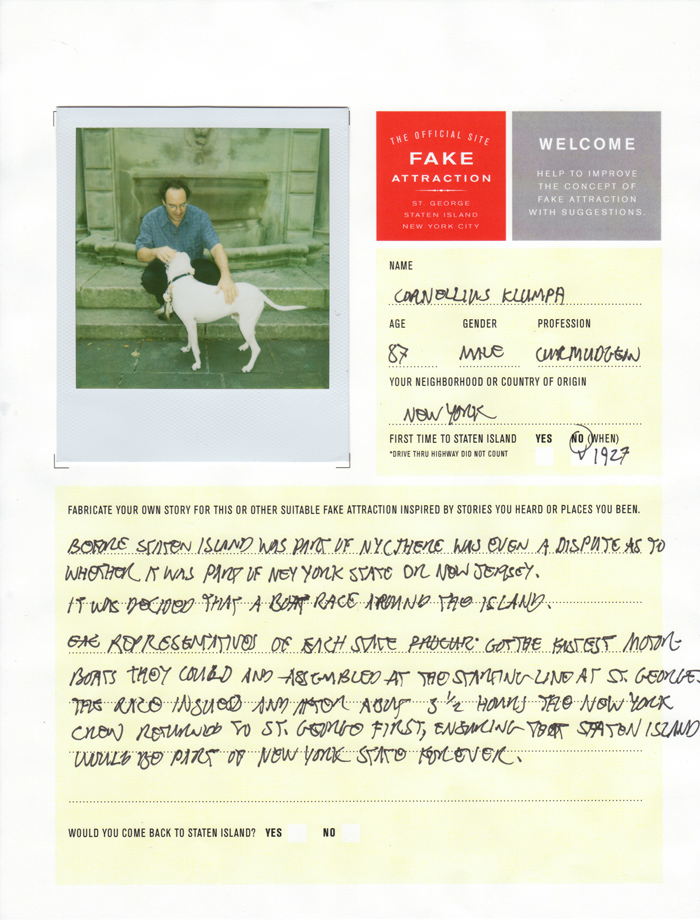Hopping on board the Staten Island ferry is something you don’t want to miss, especially because the ride is absolutely FOC! This waterborne route to Staten Island has been part of New York City’s transportation service since 1905, meant as an efficient commuter route to lower Manhattan, but it also allows visitors to experience some remarkable sightseeing. The ferry ride delivers a glorious, 5.2-mile, 20-minute mini cruise with great views of the Statue of Liberty, New York Harbor and lower Manhattan, all at no cost. The Staten Island Ferry ride from Whitehall to St. George is, in fact, the most widely visited tourist attraction in New York City. Yet rarely do visitors leave the ferry to explore Staten Island. I decided to utilize the dérive of psychogeography, as first put forward by Ivan Chtcheglov, in his influential 1953 essay, “Formulaire pour un urbanisme nouveau,” to try to give visitors a new reason to truly explore Staten Island. The dérive was defined as: “In a dérive one or more persons during a certain period drop their usual motives for movement and action, their relations, their work and leisure activities, and let themselves be drawn by the attractions of the terrain and the encounters they find there… But the dérive includes both this letting go and its necessary contradiction: the domination of psychogeographical variations by the knowledge and calculation of their possibilities.”
About Conflux Conflux is the annual New York festival for contemporary psychogeography, the investigation of everyday urban life through emerging artistic, technological and social practice. At Conflux, visual and sound artists, writers, urban adventurers and the public gather for four days to explore their urban environment. People from a wide variety of backgrounds and cultures come together at the festival to re-imagine the city as a playground, a space for positive change and an opportunity for civic engagement. The Village Voice describes Conflux as a "network of maverick artists and unorthodox urban investigators… making fresh, if underground, contributions to pedestrian life in New York City, and upping the ante on today’s fight for the soul of high-density metropolises." From architects to skateboarders, Conflux participants have an enthusiasm for the city that's contagious. Over the course of the long weekend the sidewalks are literally transformed into a mobile laboratory for creative action. With tools ranging from traditional paper maps to high-tech mobile devices, artists present walking tours, public installations and interactive performance, as well as bike and subway expeditions, workshops, a lecture series, a film program and live music performances at night. Since 2003, when we had 30 mostly local artists and a small audience, the festival has grown to include over 100 artists from across the US, as well as Australia, Canada, Japan and many European countries. As our annual call for artists becomes more and more competitive and we receive hundreds of entries, the quality of projects increases and we are now proud to present what we feel is the most innovative work being produced in the field of public-space arts. Conflux is produced by Glowlab, a Brooklyn-based organization supporting emerging art and technology inspired by the everyday life of cities. Glowlab operates as a nomadic initiative, collaborating and consulting with host galleries, arts groups and individual artists around the world. We've worked with arts organizations including Eyebeam, the New Museum of Contemporary Art, the Van Alen Institute and the Lower Manhattan Cultural Council, as well as local universities such as New York University, Hunter College and Parsons. Conflux has been reviewed in publications including the New York Times, the Village Voice Flash Art and Art Review Magazine and covered on numerous arts blogs and cultural websites such as Flavorpill, Nylon, Rhizome and Gothamist. Conflux is attended by people of differing backgrounds who share a common desire to understand, explore, and ultimately heighten their enjoyment of the urban environment while learning how to sustain and improve it. Conflux visitors are introduced to the ways cutting-edge artists utilize performance, visual art and music to address topics including the environment, sustainable development, the increased presence of technology in cities, emerging trends in social/local networking and ways we can humanize the urban experience by encouraging dialogue amongst communities. As a fiscally-sponsored project of the Brooklyn Arts Council, Conflux has received support from the New York State Council on the Arts, Artists Space, the Puffin Foundation and the Independence Community Foundation.
|
|
Couples have been coming to this spot for years to profess their love for each other. They write their names on a padlock, lock it, and throw the keys into the sea while looking toward the horizon and contemplating spending a fulfilling life together. status: Installation survived for the first day of the show but destroy by unknown party and was discovered by artist at the last day of show, September 14 at 8pm.
2 Tree of Figure location: Wall Street and Styvesant Place, behind Staten Island Museum, St. George, Staten Island Magical? Superstitious? Believe in it. It works. People have been taking it off. Their belts, that is. Various belts now adorn the trunk of this native hybird oak tree. It is believed that a person can shed a few pounds by tying a belt around this tree. Still not convinced? Try it yourself. status: Installation was dismantled by Staten Island Museum security on the first day but manage to be rescued and reinstalled by artist and stay up for the four days duration of the show. The belts are intact and remains with the estate of the artist.
Except from Staten Island Advance about this hybrid tree: One such tree stands in the middle of St. George, on Wall Street, next to the Staten Island Museum. The tree is a rare hybrid oak. It is a cross between the willow oak, a Southern tree that spread no further north than Staten Island, and a black oak, a species native to the area. The tree's acorns have been compared to snowflakes, with no two alike.
The hybrid was planted next to the museum in the 1930s by William T. Davis, a naturalist and founder of the museum who was born in 1862. A man with a foot in both the 19th and 20th centuries, Davis shared the zeal of his fellow naturalists for classifying, collecting and conserving nature as industrialism was changing the landscape. Davis learned about hybrid oaks while on an outing to Keyport, N.J., with one of his mentors, Nathaniel Lord Britton. Later, in 1888, on a solitary ramble on the South Shore, he recognized both the willow oak and a hybrid oak. Most oak trees look like the parent tree, but the hybrid has a random mix of the characteristics of two different trees. The leaves of the Davis oak are a good example. Willow-oak leaves are narrow and they're missing the characteristic lobes of most oak leaves. The lobes of the black-oak leaf are rounded with a U-shape between them. The leaves of the offspring of the two are narrow, and curved in varying degrees. The hybrid oak Davis planted may have been more common in his time, says Matarrazo, but he has only seen one other in the Tottenville woods. The fire that ravaged the South Shore in 1963 took its toll. None of the trees now standing in the affected area are more than 45 years old. Eight years ago, a grove of these youngsters were preserved through a compromise between conservationists and developers. Davis' impulse to plant the acorns - he was known to have done this throughout his lifetime - continues. The city Parks Department and local botanist Richard Lynch collect acorns, but reproduction is tricky. Out of every 50 to 100 acorns, only about one or two will germinate. At this snail's pace, a hybrid's spread is barely discernible. Still, says Matarrazo, some tree experts believe that the hybrid oaks could eventually spread as far as the Catskills, along the way becoming a species - a tree that can reproduce itself. It won't happen in our lifetime, he says, but the opportunity to see evolution in action is right under our noses.
At the turn of the century Staten Island was the playground of the wealthy. They drank from the spring-fed well that was believed to have magical wealth-drawing properties and they prospered. The town grew and the people did not pay attention to the earth, irresponsibly clearing the land and polluting the water until one day the spring suddenly ran dry. It was said the island was cursed to be forgotten. Truly the Island became deserted and even today it has the reputation of being the forgotten borough. status: No installation setup at this location but during the tea at 3pm party, artist and visitors was harresed by vagrant that populated the premises.
4 Wall of Hope location: Bay Street next to the Post Office, St. George, Staten Island This wall was originally used to protect the first residents from the colonial expedition that settled this part of Indian land in 1886. Fighting was so intense that the original wall was destroy and archaeologists later found only the footprint of the wall in the remaining stone. This replica was erected at the turn of the century by the coast guard who had their station here. Now the coast guard has gone, and the land is facing gentrification—residents prepare for a different kind of fight. Will this wall still be here tomorrow? status: No installation setup at this location. Artist did not visit this location during the show.
5 Ambassador Chief Kissing Horse location: Borough Hall Garden (special appearance at 3pm, September 11-14, 2008) Truly an American spirit, a descendant of a Monacnong tribe, a guardian of the island, his ancestor had roam this part of the forest for centuries and now he roam this land as his ancestor did. The decorated neck wear shows his conquer of the force of evil. The bones mark his victims and their spirit is in him as a protector of good and justice. status: Bryant did his job as Chief Kissing Horse well and knew his routine as the ambassador and his duty to take picture with visitors. The ceremonial necklace are intact and remains with the estate of the artist. Bryant 1999-2012, Artist, Teacher, Muse, Companion. You'll be missed and always in our hearts.
|
